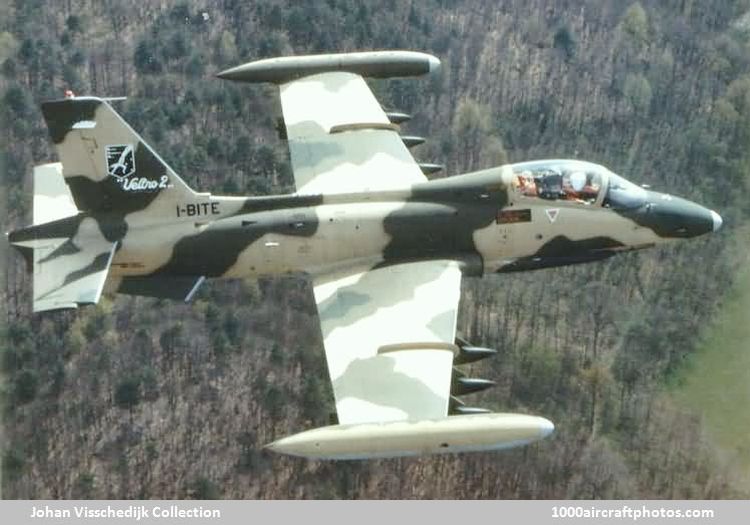-
Numero contenuti
131 -
Iscritto il
-
Ultima visita
Risposte pubblicato da ablaze wings
-
-
Intendevo l'f-22 come il primo di una nuova generazione di aerei!! Mi sembra ovvio che l'AMI necessiti di un pò d'aria fresca
Ma se ti riferisci alla generazione abbiamo il tiphoon che (se in numero sufficiente
 ) va bene, fra poco avremo gli F-35. Stiamo a posto (se non ci saranno altre sorprese)! E comunque di queste cose si è parlato, e anche parecchio!
) va bene, fra poco avremo gli F-35. Stiamo a posto (se non ci saranno altre sorprese)! E comunque di queste cose si è parlato, e anche parecchio! -----
Tornando nell'ambito del topic:
la Svezia io non la vedo messa male, perchè ne avete così poca considerazione?
Sono io a sbagliarmi su questa aeronautica?
-
e che gli champs elisée sono tre volte più larghi e lunghi
Questo è vero, ma in in Via dei Fori Imperiali c'è spazio a sufficienza per far passare qualche Centauro.
-
ma è obbligatorio fare la parata ai fori imperiali? si c'è l'altare della patria e il milite ignoto, sono monumenti di alto significato storico e nazionale, ma se tipo la si facesse vicino a una base della marina? così accanto ti vedi passare pure il cavour e non c'è quel benedetto ciottolato!!!



Certo non sarebbe male! Ma credo sia impossibile che il sito della parata del 2 giugno sia spostato.
Almeno è meglio di quando l'avevano tolta di mezzo!
E poi a quanto abbiamo visto anche in Francia la fanno al centro di Parigi, con la differenza che lì ci fanno passare comunque i carri!

-
Le turboeliche sono quelle (tra gli altri) di C-130 e C-27J. Giusto?
-
Discutere sull'opportunità da parte nostra di comprare l'F-22 è pura fantascienza, a prescindere dal fatto che non è in vendita!
 Suvvia, un poco di realismo anche in queste discussioni ipotetiche non guasterebbe
Suvvia, un poco di realismo anche in queste discussioni ipotetiche non guasterebbe 
Quoto in toto Lender.
Come ha detto, del Raptor non è consentita l'esportazione, e questo è il punto principale, ma anche se lo fosse non credo che ci sia nemmeno una remota possibilità che possa essere acquistato. I motivi sono vari.
Comunque chiudiamo l'OT
-
...
L'altra grande unità mobile (la prima Brigata) con 11 battaglioni di carabinieri in tutta Italia serve in tempo di pace da Forza dell'Ordine (per tutti quei compiti più impegnativi) e, in caso di guerra, ciascuno di questi battaglioni viene assegnato ad una delle 11 Brigate dell'Esercito.
...
Non ho capito una cosa, quindi in caso di guerra l'Arma dei Carabinieri non sarebbe più autonoma ma alle dipendenze dell'Esercito?
-
Ancora una volta un topic davvero molto interessante e fatto benissimo Blue sky!

-
Andiamo, sono caritatevole, rifatevi gli occhi:
Bisogna ammetterlo, la parata francese è tutta un'altra cosa! velivoli nel cielo e carri corazzati sulle strade di Parigi. A Roma dov'erano?
-
c'è da augurarsi che nessun uomo sano di mente possa cercare un simile risultato da nessun ordigno
si, c'è davvero da augurarselo

Il fatto è che non sempre al potere ci sono uomini sani di mente!

-
Premetto che non sono un esperto di radar ma da quello che so io l'ECR-90 è facilmente intercettabile (come qualsiasi radar meccanico) non essendo modulabile la potenza emessa mentre, al contrario, un radar AESA potendo variare tale potenza diventa molto più difficilmente intercettabile (viene definito radar LPI: low probability interception)
Per questo l'AESA è un must su qualsiasi aereo stealth.
Altri vantaggi: maggiore resistenza alle ECM ed è, meccanicamente, molto più compatto e semplice. Inoltre vede più lontano e aggancia più bersagli.
Scusate ma in questa materia ne capisco poco. Qual è il motivo per cui alcuni tipi di radar sono facilmente intercettabili mentre invece l'AESA, ad esempio è definito LPI, cioè cos'è questo variare la potenza?

-
Comunque lo sapete com'è chiamata "informalmente" la Kitty Hawk dai militari US Navy?
 Sono curiosoo!
Sono curiosoo!come?
-
Secondo quanto riportato dalla stampa britannica, ultimamente il primo ministro avrebbe lanciato una campagna di contatto con gli elettori nel tentativo di ribaltare i sondaggi sfavorevoli facendo personalmente decine di telefonate a gente che gli aveva scritto lamentandosi per le ragioni più disparate."
Addirittura!

In Italia potrebbe mai accadere!?

Credo sia un invenzione della stampa inglese, me lo fa pensare "ragioni più disparate".
Ve l'immaginate: <<Gordon ma nell'amatriciana ci va l'aglio?>>

-
Se venivano usate ,e vengono ancora usate dalle principali forze, in questo modo, vuol dire che le sue caratteristiche, tra cui rimanere inesplose, hanno una valenza pratica.
E comunque pur essendo in 109 il grosso è ancora li con le sue belle bombe a grappolo che faranno ancora molte vittime fra i civili.
-
Mi ripeterò: Anna Politkvoskaya dava fastidio al potere. Il potere l'ha uccisa. Chi è il potere in Russia?
Infatti questo è palese, non capisco perchè c'è ancora qualcuno che non ha intenzione di capirlo!
E comunque questa discussione è OT, molto OT!

-
In effetti il comportamento della Russia (mi riferisco al fatto di vendere tecnologia nucleare all'Iran) è alquanto strano!

Per quanto riguarda la giornalista Anna Politkovskaya, è risaputo ormai il motivo per cui è stata uccisa e da chi è stata uccisa. Si abbia il buon senso di ammetterlo, almeno questo.
-
State parlando tutti come se fosse imminente e sicuro un rischieramento nel sud del A-stan. Il ministro non ha parlato di questo, almeno a mio avviso.
Questo non vuol dire assolutamente che non sono a favore di un maggior impiego dei nostri militari e di un rafforzamento del contingente, anzi credo che sia giusto che anche noi diamo una mano laddove serve ,cioè nel sud, ovviamente con mezzi più adeguati e in maggiori quantità.
-
Purtroppo il pubblico va anche saputo conquistare ....
Avete presente ad esempio "La storia siamo noi" di Gianni Minoli ? Programma buono nei contenuti ma di una noia mortale

Si forse a volte è un pò noioso, ma non lo è sempre dai! tratta argomenti interessanti e di cui, molte volte, non si conosce quasi niente. Non i soliti argomenti quindi!
-
GRANDIOSO!
Davvero molto interessante!

-
La Germania e la Francia industrialmente sono delle vere e proprie potenze su scala mondiale!!!!
Perchè il Regno Unito no!?

Certamente le capacità industriali pesano, e non poco, in questo tipo di conti. Per capirlo basta guardare i precedenti!
-
L'USAF comunque sperimentò un bombardiere nucleare ( a propulsione intendo) , ma fù un disastro ...

Ci furono tentativi anche da parte sovietica, non andò par niente meglio!
Russian Nuclear Bomber hoaxThe 1 December 1958 issue of Aviation Week included an article, Soviets Flight Testing Nuclear Bomber, that claimed that the Soviets had made great progress in their own nuclear aircraft program. This was accompanied by an editorial on the topic as well. The magazine claimed that the aircraft was real beyond a doubt, stating that "A nuclear-powered bomber is being flight tested in the Soviet Union. Completed about six months ago, this aircraft has been flying in the Moscow area for at least two months. It has been observed both in flight and on the ground by a wide variety of foreign observers from Communist and non-Communist countries." Unlike the US designs of the same era, which were purely experimental, the article noted that "The Soviet aircraft is a prototype of a design to perform a military mission as a continuous airborne alert warning system and missile launching platform."
Photographs illustrated the article, along with technical diagrams on the proposed layout. They were so widely seen that one company produced a plastic model aircraft, a surprisingly faithful rendition of the diagrams in the article.
Concerns were soon expressed in Washington that the "the Russians were from three to five years ahead of the US in the field of atomic aircraft engines and that they would move even further ahead unless the US pressed forward with its own program". This led to continued funding of the US's own program, for a time.
In reality the entire article was a hoax. The aircraft in the photographs was later revealed to be the entirely conventional Myasishchev M-50 Bounder, a medium-range strategic bomber with performance similar to the USAFs B-58 Hustler. The design was considered a failure and never entered service. The design was revealed to the public on Soviet Aviation Day in 1963 at Monino, putting the issue to rest.
Tupolev Tu-95LAL
It was later learned that the Soviets did have a nuclear aircraft program, but like its US counterpart, it was entirely experimental. On 12 August 1955 the Council of Ministers of the USSR issued a directive ordering bomber-related companies to join forces in researching nuclear aircraft. The design bureaus of Andrei Tupolev and Vladimir Myasishchev became the chief design teams, while N.D. Kuznetsov and A.M. Lyulka, were assigned to develop the engines. They chose to focus on the direct cycle system from the start, testing ramjets, jet engines and even turboprops.
The Tupolev bureau, knowing the complexity of the task assigned to them, estimated that it would be two decades before the program could produce a working prototype. They assumed that the first operational nuclear-assisted airplane could take to the air in the late 1970s or early 1980s. In order to gain experience with the operational problems, they proposed building a flying testbed as soon as possible, mounting a small reactor in a Tupolev Tu-95M to create the Tu-95LAL.
The reactor was fit in the bomb bay of the aircraft, although it did not fit cleanly and a "bump" was put on top as well. It had 2 conventional turboprop engines and 2 experimental 'dirty' direct cycle jet engines powered by a minimally shielded nuclear reactor in the main fuselage. Between May and August 1961, the Tu-95LAL completed 34 research flights. Most of these were made with the reactor shut down. The main purpose of the flight phase was examining the effectiveness of the radiation shielding which was one of the main concerns for the engineers. Massive amounts of liquid sodium, beryllium oxide, cadmium, paraffin wax as well as steel plates were used for protection. The results were promising; radiation levels were low enough to consider continuing development.
But, as in the US, development never continued past this point. The obvious potential of the ICBM made the expensive program superfluous, and it was scaled back. Several proposed designs have since surfaced, although whether or not these are any more real that the original AvWeek story is questionable. Examples include a Tupolev design that looks like an enlarged F-104 Starfighter with two engines in the rear, and a Myasishchev design, the M-60, that looked much like the M-50Bounder.
-
La specialità del Whartog è quello strumento fallico a 7 canne rotanti che gli esce dal muso....

Infatti tutta la specifica dell'aereo era costruita intorno al cannone, che infatti era presente in entrambi i concorrenti.
[...]
A dire il vero inizialmente il cannone (il GAU-8 Avenger) non c'era proprio sull' A-10, infatti nemmeno esisteva l'Avenger (o era ancora in fase di sviluppo).
-
La QEII è in gredo di portare 36 F-35 e...
cosa si sa su:
The Airborne Surveillance and Control (ASaC) component began as "Future Organic Airborne Early Warning" (FOAEW), with contracts being placed with BAE/Northrop Grumman and Thales in April 2001. In April 2002 BAE and Northrop Grumman received a follow-on study contract for Phase II of the project by then renamed Maritime Airborne Surveillance & Control (MASC). -
I dubbi sorgevano riguardo ai cannoni (anzi, è più adatto mitragliatrici) integrati in fusoliera, come questi:

Credo che Devil di riferisse alla domanda di elia.
-
Cos'altro si conosce di questa nave? (ad esempio sul numero di aerei che potrà portare e autonomia)
Magari facendo un confronto con la Cavour.





Auguri!
in Off Topic
Inviato · Modificato da ablaze wings
AUGURI!